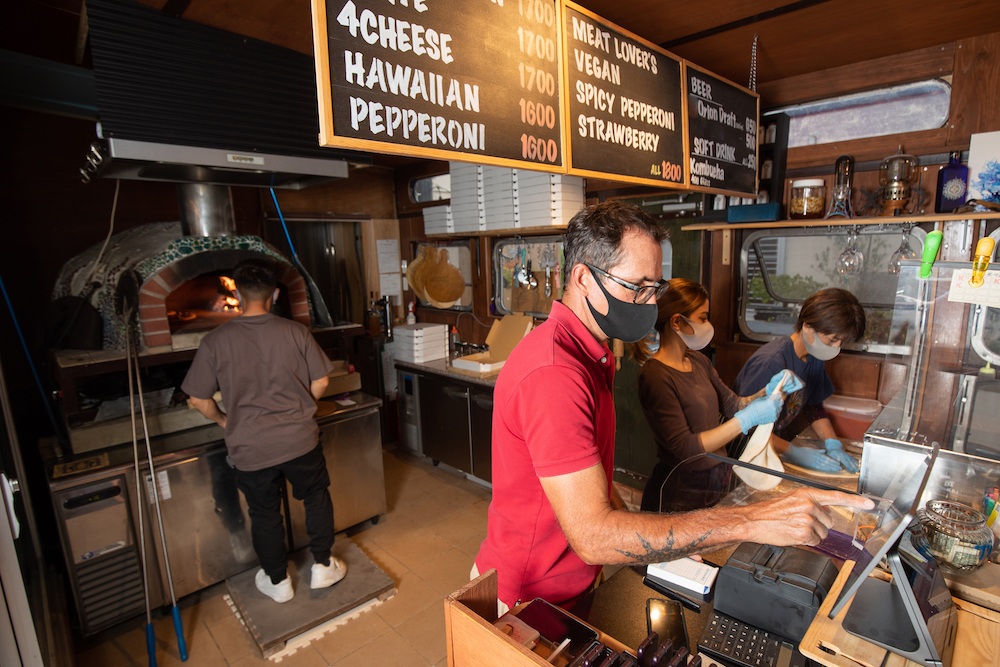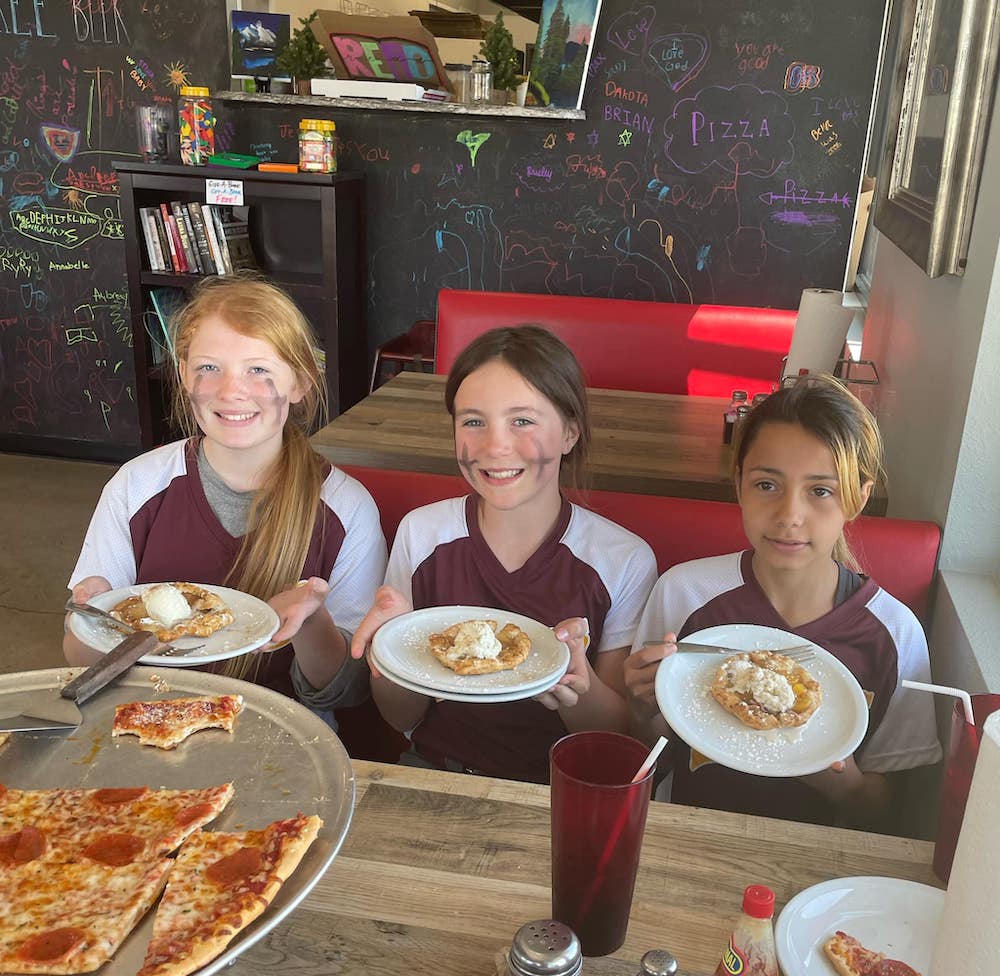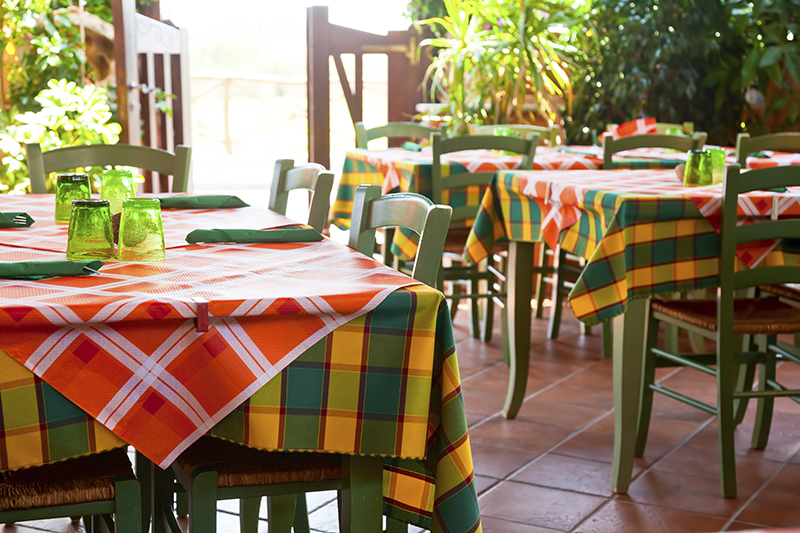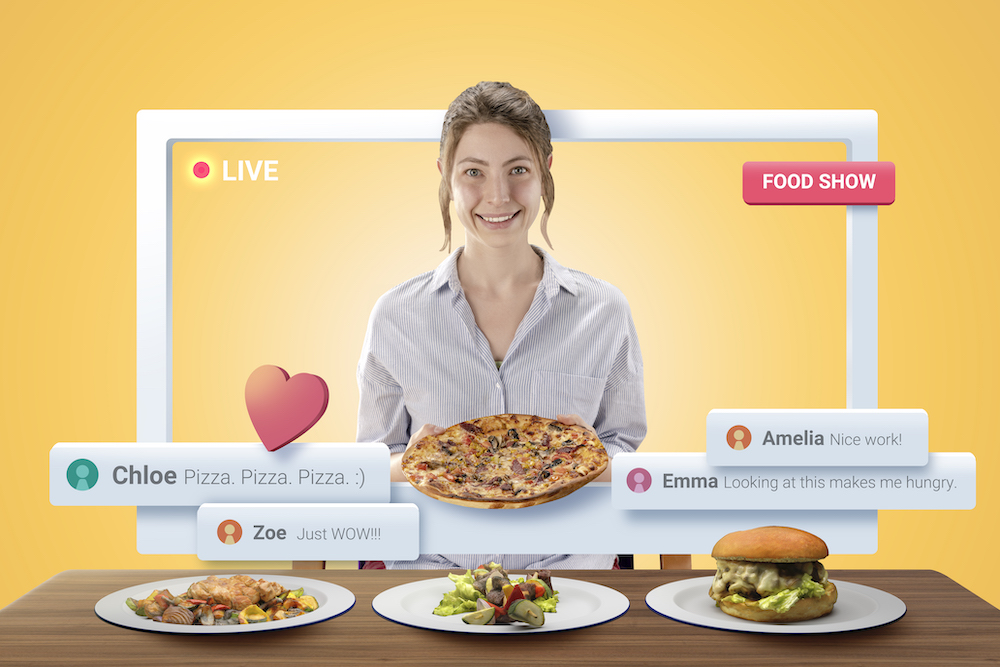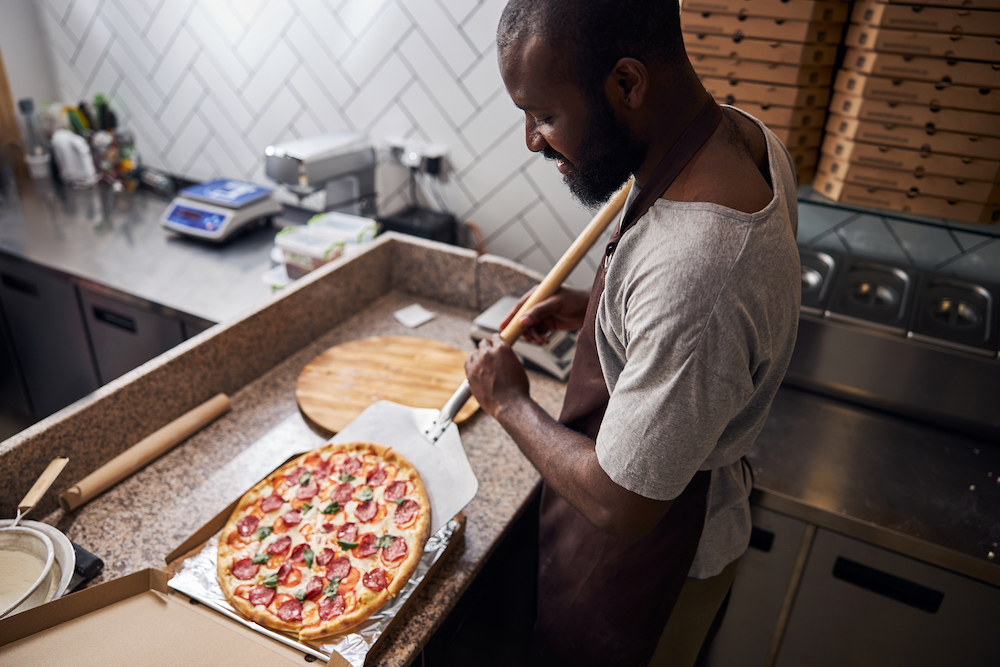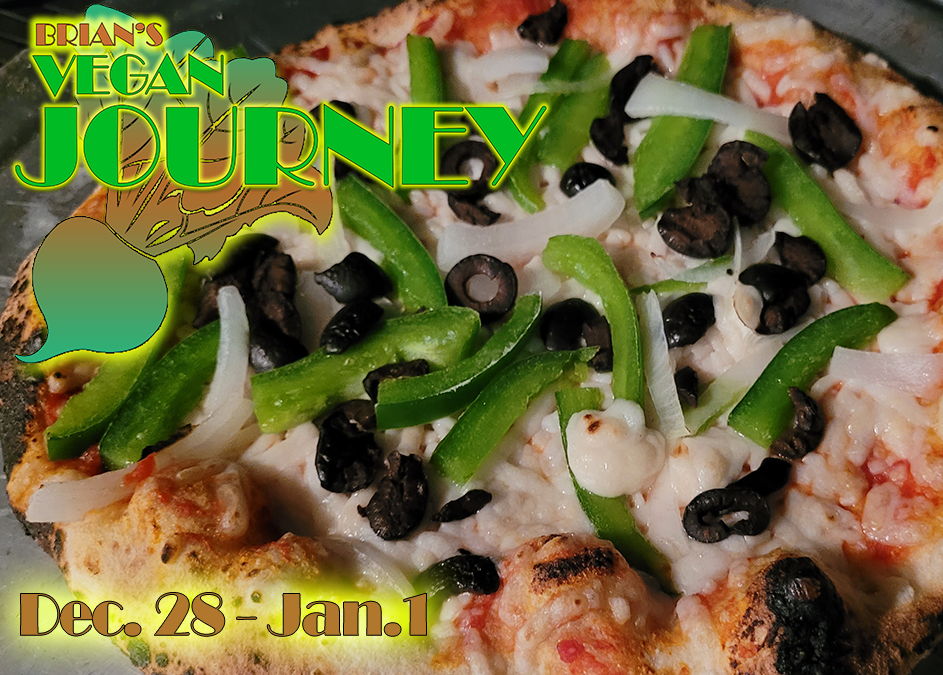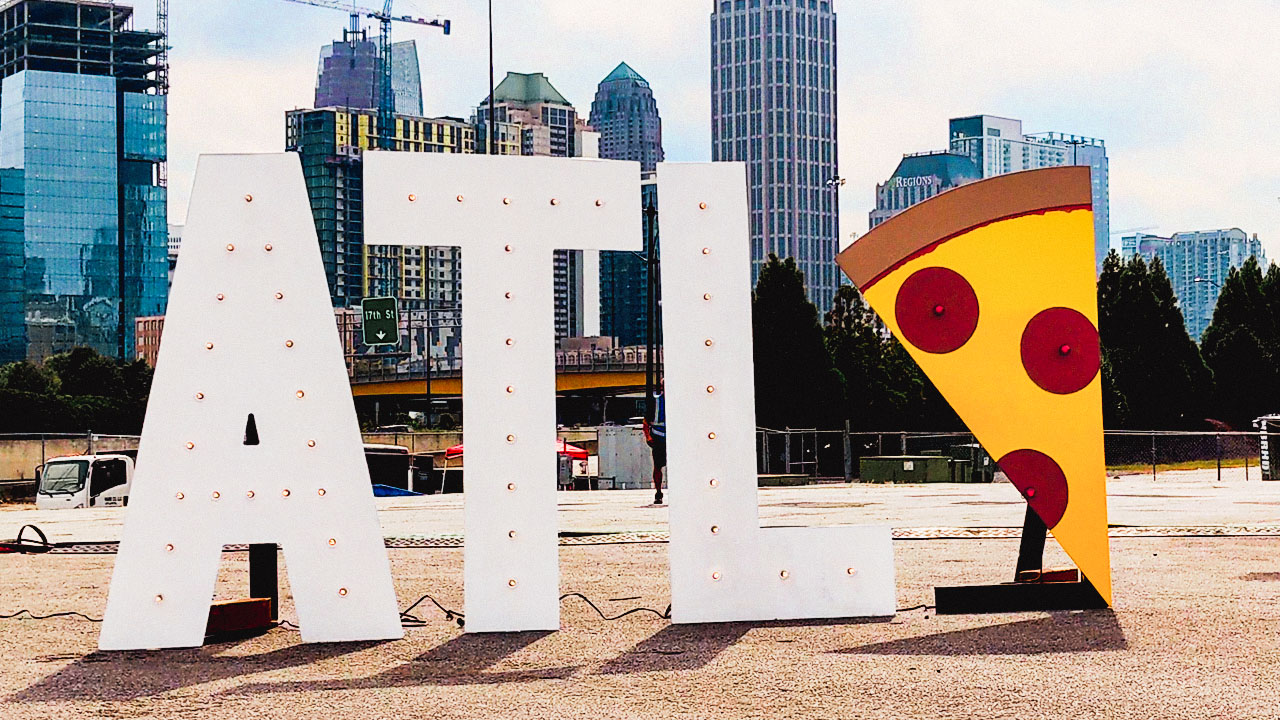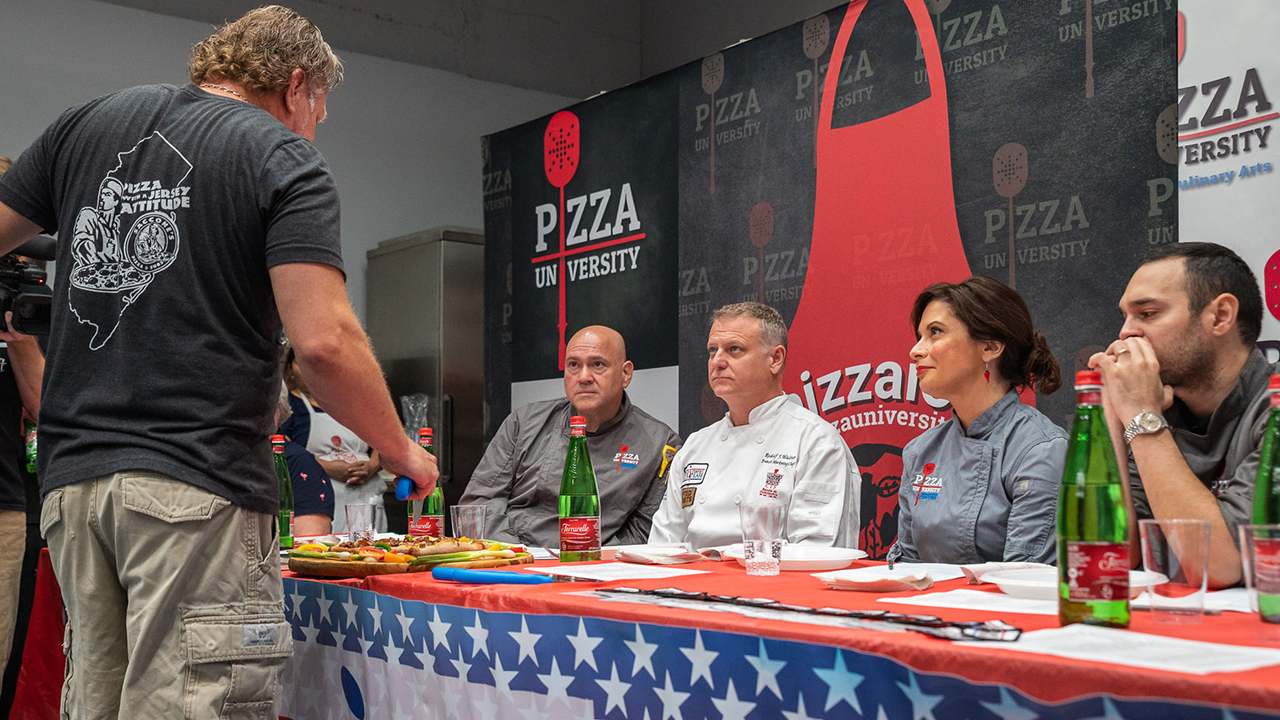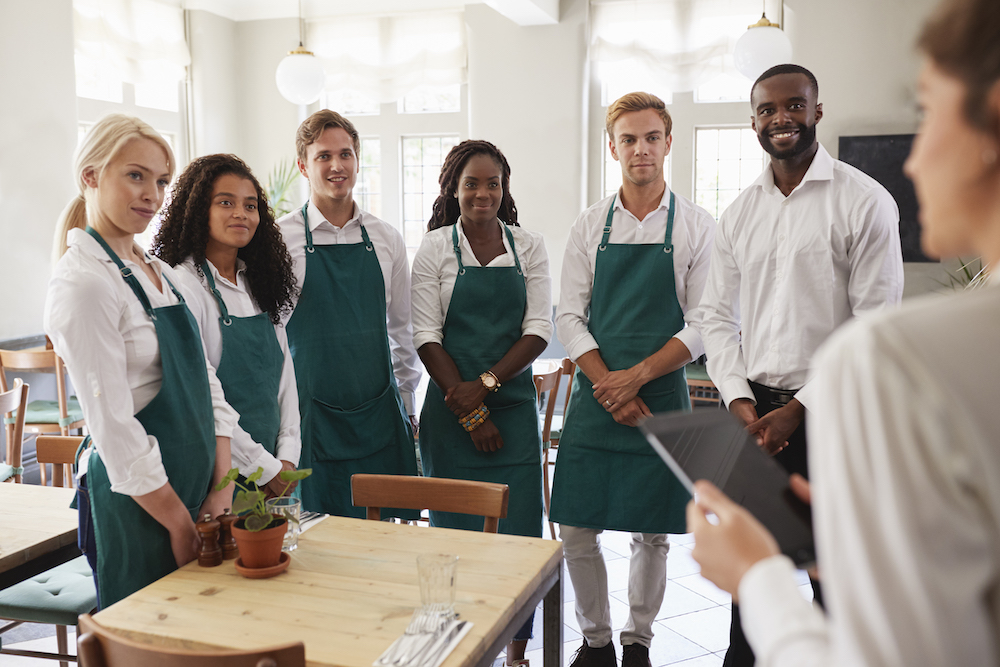By Doug Reifschneider
Historically, restaurants, especially pizzerias, have been slow to adopt innovative technology. The pandemic changed that. It’s no surprise that the adoption of technology is what kept many restaurants afloat during the pandemic, and the acceleration of that adoption saved others. Based on necessity and a will to survive, restaurants in every sector of the industry have been pivoting to meet customer expectations.
In 2021, restaurant marketing strategy, aesthetics, and internal systems—for independents and chains alike—will evolve, and technology and robotics will become commonplace. Here’s a look at 12 trends to keep in mind for the coming year.
Related: What does the future of pizza look like?
Healthy Chains Will Replace Closed Independent Restaurants.
1. Chain restaurants will rule. Seven of ten restaurants are owned by individual operators, most of whom are independent, according to the National Restaurant Association. Unfortunately, independents have seen the most recent closures, and if 10-15 percent of all restaurants permanently close during the pandemic, the healthy chains will become dominant. Chains will increase unit growth to fill the void left by closed restaurant locations.
2. Independent restaurants will learn. New independents will arise out of the ashes. The new wave of restaurateurs will learn from the recent crisis and will focus on sustainability of operations by leaning hard into delivery, take-home, curbside pick-up, contactless payment and other enabling technology.
Marketing Strategy Will Adapt.
3. Messaging will become increasingly important. All restaurants will need to understand their consumer and know the new customer journey better than ever before. Every brand will also need to nail their brand proposition. If they don’t, all ads after the pandemic ends will be about digital ordering and delivery. Digital channels may be a convenient benefit, but if every restaurant offers the standard digital channels, those digital channels will not be unique to any one brand.
4. Operators will need to think locally. Independent restaurants and chains alike will finally make the management of local marketing channels a priority. Restaurant brands and independents have leaned heavily on email and social media to communicate with their best customers and guests during the pandemic. Being found by consumers who live, work, or drive by your locations will be incredibly important. Independent restaurateurs must take control of their Google My Business (GMB) account and local listings. If you’re not “top of find,” you will perish.
5. Digital advertising will become high-priority. Whereas TV was a big part of the advertising mix for national chains and larger regional chains, the shift to off-premise will force restaurant brands to lean much more heavily into digital advertising channels than ever before. The shift will occur because restaurants will be able to more easily track conversions from online visibility to online orders as a key metric. The brands who do continue to use TV will determine how to make outcome-based TV buying work.
Internal Systems and Restaurant Design Will Evolve.
6. Heightened cleanliness will remain a necessity. Serve-Safe and other entities that train restaurant employees to prepare and handle food will proliferate, and the constant disinfecting of communal surfaces, such as counters, door handles, tables, chairs and condiment containers, will become the expected norm.
7. Restaurateurs will fully embrace digital ordering. Every restaurant, independent or chain, will provide as many e-commerce channels for guests to order food as possible to create a contactless experience. Wing Stop, Domino’s, Papa John’s and Chipotle are doing well during the pandemic because they were positioned to survive in a crisis. Restaurateurs will fail if they don’t learn to embrace digital orders and provide ways for customers to get the food where they want it and when they want it.
Related: How contactless delivery is changing the pizza restaurant industry
8. Off-premise business will continue to prosper. Although consumers are getting used to ordering food digitally and internal and external delivery are expected, the trend may slow after the pandemic ends. Even so, the demand for delivery, take-out, meal kits and the like will proliferate.
9. Dining areas will shrink. Because of the shift to off-premise dining, new restaurants in all categories will reduce the square feet of their dining areas. Existing locations will remove tables and chairs to always be prepared for social distancing. More importantly, many QSR and fast-casual chains have announced new designs that lean more heavily into pick-up and curbside-to-go versus on-premise dining.
Burger King, McDonald’s, Chipotle and others have already announced plans for future concepts. Drive-thrus are king, and dining rooms are shrinking. QSR Magazine published a good piece on Restaurant 4.0 that digs deeper into many options restaurants may adapt to thrive. And earlier in the year they provided a glimpse of the Restaurant of the Future (ROTF).
10. Innovators will find their own way. There will also be creative and innovative individuals and organizations who will buck the status quo. Whether they embrace video dining, reinvent food halls, or return to a cash-only payment model, we will see successful attempts to avoid being trapped by the aforementioned trends.
11. Ghost kitchens will flourish. For example, new and existing concepts will cooperate together to develop ghost kitchens where multiple cuisines live in harmony to satisfy the appetite of urban dwellers, and the virtual food court will become a thing.
12. Technological innovation will keep pushing forward. Independents and chains alike will finally make technology a priority. Even before the pandemic, labor issues—such as worker shortages and minimum wage increases in some areas—were putting pressure on restaurants to do so. Many predicted that some kind of automation will have to be innovated for restaurants to thrive in the future. Enter COVID-19, coupled with a fear of human hands contaminating food as it is prepared, and you get the incentive needed to push the industry to that end. We’re starting to see this with White Castle. They recently debuted Flippy the robot and are in the process of rolling the advanced technology out to an additional 10 restaurants.
Related: How leading chains handle pizza delivery and carryout
Bottom Line
COVID-19 has forced some drastic changes and adaptations upon the restaurant industry that will endure well into 2021 and possibly well beyond. The good news is that the pandemic proved yet again how resilient and awesome the restaurant industry is. After all, people have to eat, and most of us don’t want to eat food from home all the time. People value eating food someone else cooked, especially when it’s pizza! Because, at the end of the day, it’s all about the food and the experience.
Doug Reifschneider is CMO with Chief Outsiders, the nation’s leading fractional CMO firm focused on mid-size company growth. He works with restaurant and retail companies developing comprehensive marketing strategies and practical tactics. More information at www.chiefoutsiders.com.
is CMO with Chief Outsiders, the nation’s leading fractional CMO firm focused on mid-size company growth. He works with restaurant and retail companies developing comprehensive marketing strategies and practical tactics. More information at www.chiefoutsiders.com.


